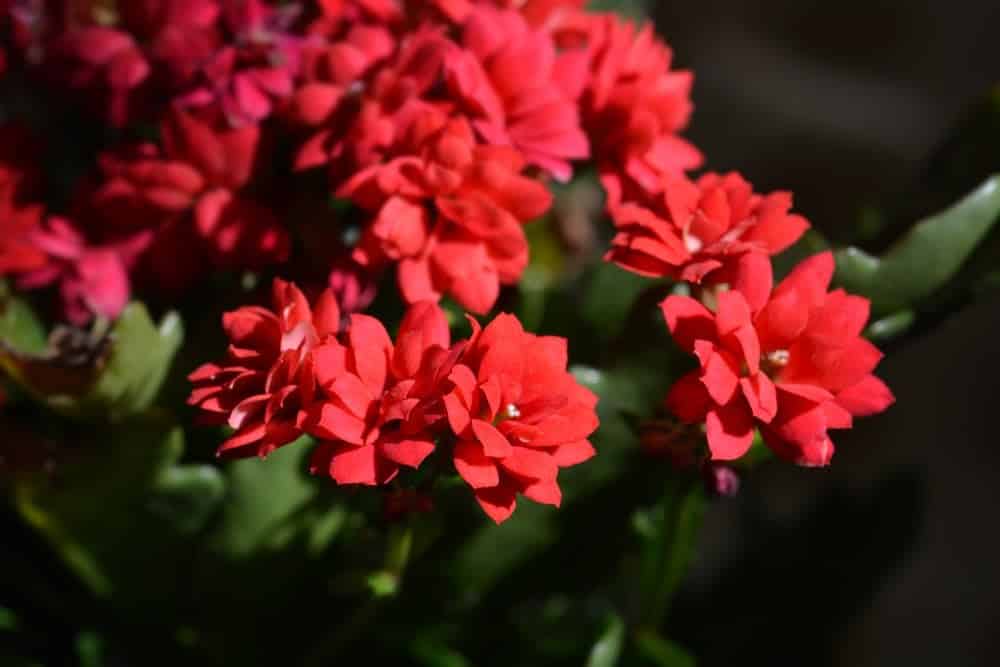This plant was developed in the Netherlands and is botanically known as Kalanchoe blossfeldiana.
It is a plant that belongs to the Crassulaceae family, which makes it native to Madagascar. Belonging to the succulent family, it is not as demanding as other plants so this is one thing that many people like when choosing houseplants.
About Calandiva Plant
The succulent has colorful blossoms and vibrant green leaves. They are a succulent, like cactus, and require minimum maintenance. It just likes to be left alone. The Calandiva plant makes a great houseplant. From the moment they start flowering, they can last up to six weeks and generally flower during the spring and winter. The plant can be found anywhere in the world.
Calandiva Plant Care and Growing Guide
1. Light Requirement
When you grow these as an indoor plant, make sure that they receive as much sunlight as possible because they can be affected by the lack of sun. They need either bright, indirect sunlight or direct sunlight, preferably a south-facing windowsill during the day. If you grow it outdoors where it is dry and hot, you should plant them in partial to filtered sun.
2. Water
This is a drought-resistant plant so it is better to have too little water than too much. You should water it thoroughly every week. It is best to wait for the soil to dry at least two to three inches deep before you water it again. You should have containers that have drain holes because when some water runs out you know that the root zone has been moistened
3. Climate
In zones 9-11 it can be grown outdoors but in the cooler regions, it needs to be grown indoors in pots.
4. Soil
The Calandiva loves neutral or acidic soil pH levels and wants it well-drained. They cannot tolerate a lot of water on their soil. You can add some perlite or sand to your regular potting mix or buy the potting soil that is made specifically for cacti and succulents. Once or twice a month apply a balanced fertilizer during the growing season but do not fertilize over the winter.
This is done to encourage the plant to flower. For an indoor plant, you should use a liquid fertilizer but you can use granular or liquid fertilizer on outdoor plants. The fertilizer mixture should be one gallon of water with a half teaspoon of fertilizer and once mixed pour it on the soil. This replaces one watering session.

5. Temperature
The Calandiva plant grows and blooms better in temperatures between 65-85 degrees. They are sensitive to the cold and need protection from the frost.
6. Speed of Growth
The Calandiva plant has a slower growth rate when you compare it to other succulents.
7. Height and Spread
The Calandiva will grow to 12 to 18 inches in height with a diameter of four to 20 inches wide.
8. Flowers
Some of these plants look like roses. This is because they have many petals. Some could have eight, 16, or even 32 petals. Their flowers can be pink, burgundy, orange, red, cream, lilac, and yellow. This makes them a beautiful ornamental plant. This plant was bred to grow with large double flowers instead of single flowers. The bloom time extends for a period of six to eight weeks.
Similar post: Cat’s Claw Growing Guide
9. How to get Your Calandiva Plant to Flower
In order to develop flower buds, the plant needs at least 14 to 16 hours of darkness and short days during the fall and winter months. This is when this flower bud develops. If it is possible, you need to keep your indoor plants out of artificial light during the winter.
You need to put them in a closet or dark room from late in the afternoon until morning. Once you notice the little buds forming, you can let the plant remain wherever you want to put it. You should look for your first blossoms in January.
When you bring it out of the dark, you need to immediately fertilize it with a water-soluble 20-8-20 formula that is diluted to half strength.
10. Trimming
All the trimming that the Calandiva plant needs is minor to help encourage the plant to blossom and look fuller. You will need to cut back on the taller stems that are above the leaves after it has finished flowering but leave the new small plant shoots. They are the ones that form at the ends of the leaves remaining if you want your plant to grow more.
11. Propagation
When you are trimming your plant, you can remove the new little shoot and plant them directly into moist soil to start growing new plants.
Is Calandiva Plant Poisonous?
Yes, this plant is toxic to pets and children, especially if they ingest the leaves or stems.
Also read: Eugenia Topiary: Plant Care & Growing Guide
Common Calandiva Plant Problems
- Spindly looking: Not getting enough light
- Stem rot or powdery mildew: Over-watering
- Leaves wilted: Root-rot
The soil could also be too wet so you should cut back on watering if you notice the powdery mildew or stem rot. You can also apply a commercial product to get rid of the powdery mildew after you figure out the cause. If you see any small bugs like an aphid, spider mites, mealy bugs, or brown scale, just wipe them off gently with a damp cloth.
Learn more: Syngonium: Plant Care and Growing Guide
Conclusion
Although most gardeners will plant it as an indoor plant, if you decide that you are going to plant it outside you need to make sure that it gets the sunlight it needs but it also has to be sheltered from high winds. These winds could topple the plant if the wind hits the thick leaves.
This is a plant that will flower about Christmas so you can use it as a centerpiece. It also makes a great gift. They are very easy to take care of and are almost impossible to kill unless you over-water them or do not give them enough sun. Treat them like any other succulent and you will have no problem keeping them alive. Put them in the dark if you want them to re-bloom.
Keep reading:
- Corn Plant (Mass Cane) Care & Growing Guide
- Peperomia Plant Care & Growing Guide
- Gladiolus: Plant Care and Growing Guide
Victoria is the owner and main author of hobby plants. She loves spending her free time in her garden planting and taking care of her plants. Victoria hopes you enjoy the content here!




![Mother Of Thousands Plant [Complete Plant Care Guide] Mother Of Thousands Plant [Complete Plant Care Guide]](https://www.hobbyplants.com/wp-content/uploads/2022/07/mother-of-thousands-plant-300x158.jpg)
![Majesty Palm Plant Care: [Complete Beginner's Guide] Majesty Palm Plant Care: [Complete Beginner's Guide]](https://www.hobbyplants.com/wp-content/uploads/2022/08/majesty-palm-care-300x158.jpg)
![Exotic Angel Plant Care: [Complete Beginner's Guide] Exotic Angel Plant Care: [Complete Beginner's Guide]](https://www.hobbyplants.com/wp-content/uploads/2022/08/exotic-angel-plant-care-300x158.jpg)
![Snow White Waffle Plant: [Complete Care Guide] Snow White Waffle Plant: [Complete Care Guide]](https://www.hobbyplants.com/wp-content/uploads/2022/08/snow-white-waffle-plant-300x158.jpg)
![Waffle Plant Care: [Complete Beginner's Guide] Waffle Plant Care: [Complete Beginner's Guide]](https://www.hobbyplants.com/wp-content/uploads/2022/08/waffle-plant-300x158.jpg)
![Bird Of Paradise Plant Care: [Complete Beginner's Guide] Bird Of Paradise Plant Care: [Complete Beginner's Guide]](https://www.hobbyplants.com/wp-content/uploads/2022/08/bird-of-paradise-plant-300x158.jpg)
![Purple Passion Plant Care: [Complete Beginner's Guide] Purple Passion Plant Care: [Complete Beginner's Guide]](https://www.hobbyplants.com/wp-content/uploads/2022/08/purple-passion-plant-care-300x158.jpg)
![China Doll Plant Care: [Complete Beginner's Guide] China Doll Plant Care: [Complete Beginner's Guide]](https://www.hobbyplants.com/wp-content/uploads/2022/09/china-doll-plant-care-300x158.jpg)